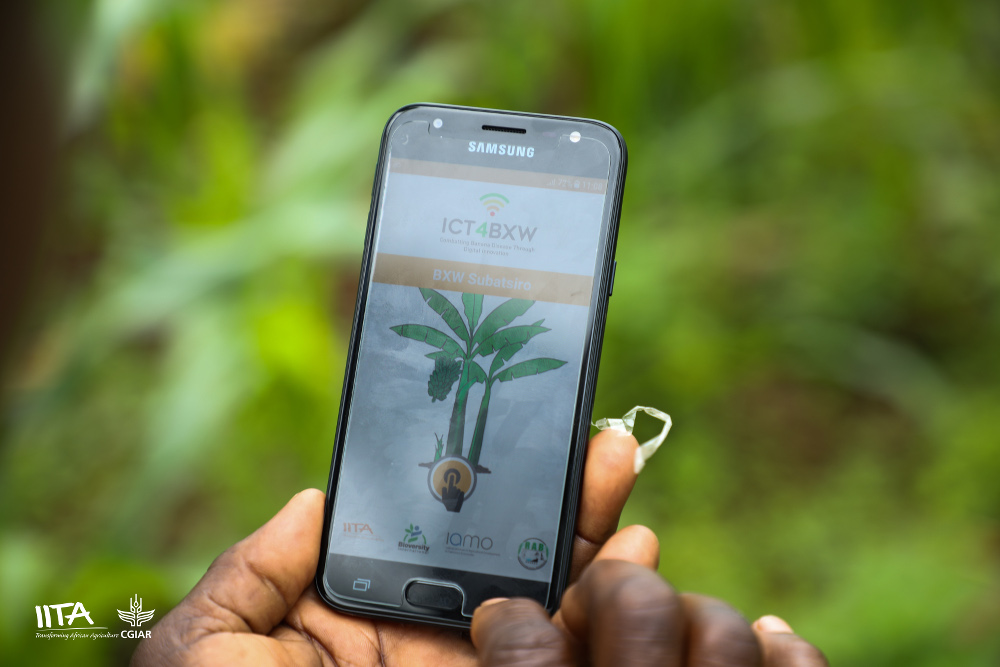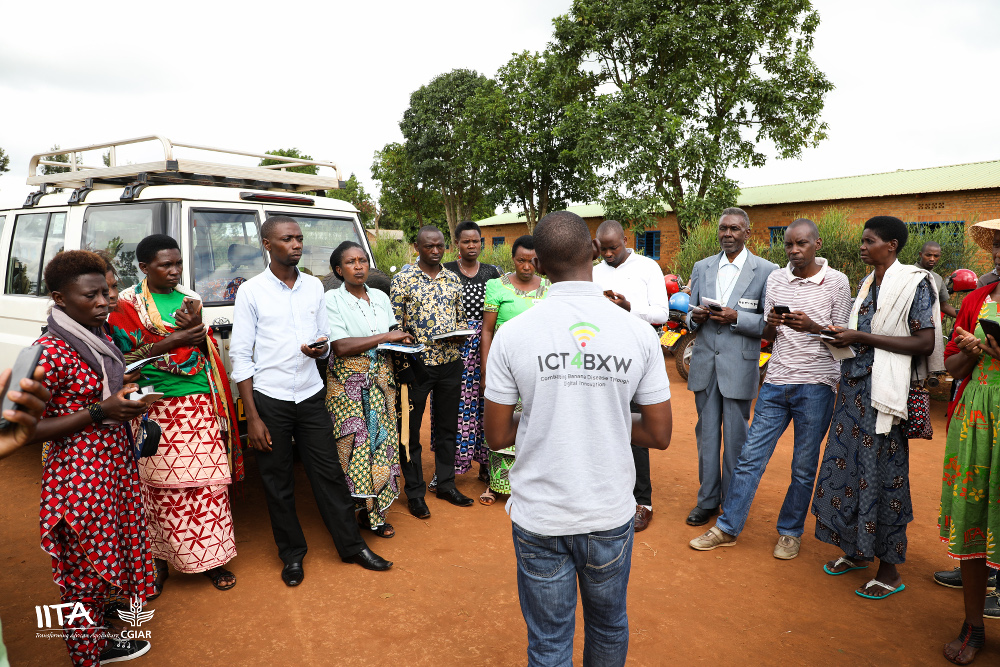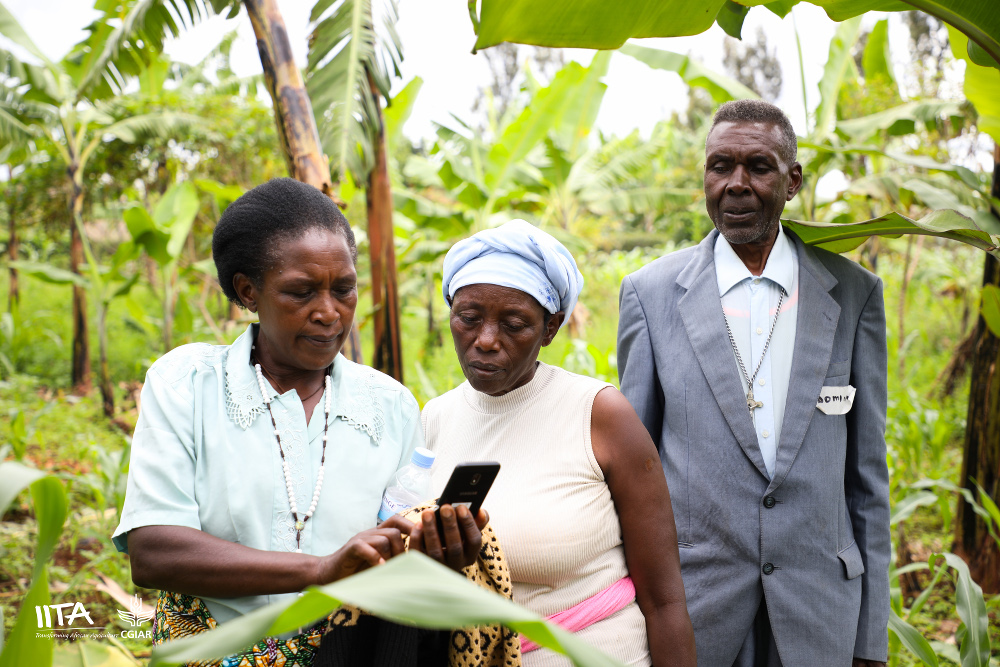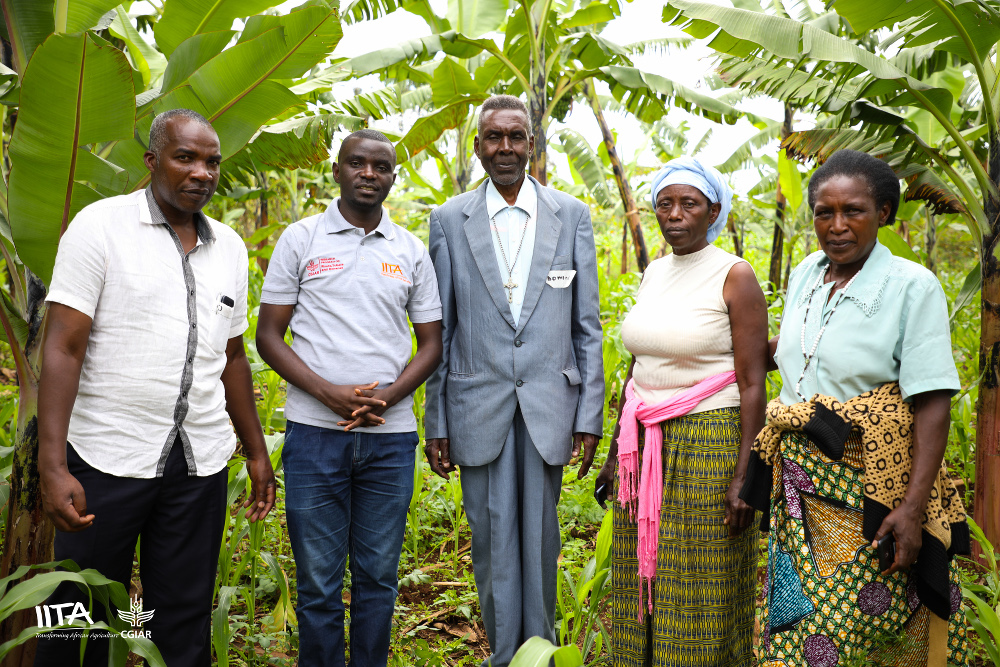Digital tools only part of the food security solution
Lessons learned tackling Banana Xanthomonas Wilt in the Great Lakes Region show that digital extension offers critical two-way data flow, but is not a panacea to protect food security.
This blog is an effort of the Data-Driven Agronomy Community of Practice to highlight CGIAR’s digital extension work.
When you think of a banana, what image comes to mind? Probably a long, yellow fruit. Around 95 percent of global banana exports are of one single variety – the long, yellow Cavendish that most people know. But it’s only one of more than 1,000 wild varieties.
This single cultivar, the Cavendish, is an important source of livelihood for millions of farmers in the African Great Lakes Region – Democratic Republic of Congo, Kenya, Rwanda, Tanzania and Uganda – where it is grown on 30 percent of cultivated land.
But pests and diseases are hitting yields, with knock-on impacts on household income, food and nutrition security. Especially disastrous is the bacteria-induced Banana Xanthomonas Wilt (BXW), seriously hitting production and leaving farmers scrambling to combat it.
Using tech to fight back
The battle to curb the disease is ongoing. But tracking its spread is one of the things researchers working on the ICT4BXW project have on their to-do list. Their idea is two-fold: to use digital tools to get information to farmers; and collect data from them to keep track of the disease spread in Rwanda.
The plan is to equip extension providers and farmers with effective advice about wilt control and prevention; then use data farmers provide back to them about the disease, to make cost-effective tools for preventing its spread and promoting its control regionally.
The project uses a combination of citizen science, where farmers and extension providers in Rwanda help collect data about banana wilt through digital extension – which can eventually be mined to create early warning systems to prevent and predict spread.
Not a panacea
Yet as scientists point out in this diagnostics paper from NJAS – Wageningen Journal of Life Science, digital innovations and tools are an important part of the mix in helping farmers cope with diseases and other threats like banana wilt. But they are not the solution.
Marc Schut, a senior scientist working with the International Institute of Tropical Agriculture (IITA), explains that while digital extension tools are useful in combatting disease and preventing spread, their use is not a panacea.
“What banana wilt research shows us is that disease is often a complex problem. It has biophysical, technical, social and cultural dimensions. We have to understand what is causing it. Only a few of those dimensions are related to access to knowledge and information – and even fewer can be solved with digital extension,” he says.
“We need to explore how diseases are spreading and why current extension systems are not stopping them. To understand what is causing diseases and sustaining them, and why available solutions do not have the desirable impact.
“That is why we are also investing in the non-digital part of the story, for example by actively engaging policymakers to see if we can promote new BXW management practices through the Rwandan extension system.”
Using data to make the big picture
Rather, explains Schut, digital extension becomes part of a process, allowing farmers to leapfrog problems – like bad roads, or even gender constraints – which prevent them from receiving timely, accurate and correct information through the traditional extension systems.
“Information and knowledge are not just about data and digital extension. Our goal is to use digital extension to stimulate learning process, generate guidelines about the most efficient and inclusive tools for extension and service providers,” says Schut.
“So, when the time comes that everyone has a smartphone, we can work together with digital service providers, to serve a broad audience. Our mandate is to learn and draw lessons about what works and what doesn’t for others for others to learn from our mistakes, reaching more beneficiaries, faster and in a more cost-efficient way.”
Know your farmer
Other factors also need to be taken into account to reach farmers. Rhys Manners, a data scientist working with IITA as part of the CIALCA consortium, of which ICT4BXW project is part, explains that farmer internet and mobile phone access vary widely across the region. And, there are nuanced issues like those of gender: who controls access to the phone?
“Farmers in Rwanda, for example, have better access to digital infrastructure than those in Democratic Republic of Congo,” says Manners, whose team is currently mining and digitizing farmer household data spanning 14 years of research in Rwanda, Burundi and the Democratic Republic of Congo.
Their work involves analyzing data sets from 5,000 farmers across the region, characterizing them and their different needs depending on their location, gender, farm size, commodity-orientation, nutritional status, education, or availability of markets nearby.
The work by Manners and his team can help extension providers to better know the needs of farmers. That can inform what kind of digital – and non-digital – innovations and services can support them in improving their livelihoods.
This is essential for tailoring innovation and services to the diverse needs of farmers. And, it is a shift from one-size-fits-all innovations which miss important farm characteristics, determining whether or not they actually lead to improved farm livelihoods. Much of this data is now freely available through open access policies.
So, while digital tools, like those used to control BXW can provide opportunities for some groups of farmers, others will heavily rely on traditional extension systems. Using big data, researchers can understand the difference, and build more effective tools to help farmers better navigate future threats and challenges.
Photo credits: IITA
February 20, 2020
Georgina Smith
Nairobi Kenya
15 - 15Shares
Latest news
15 - 15Shares








